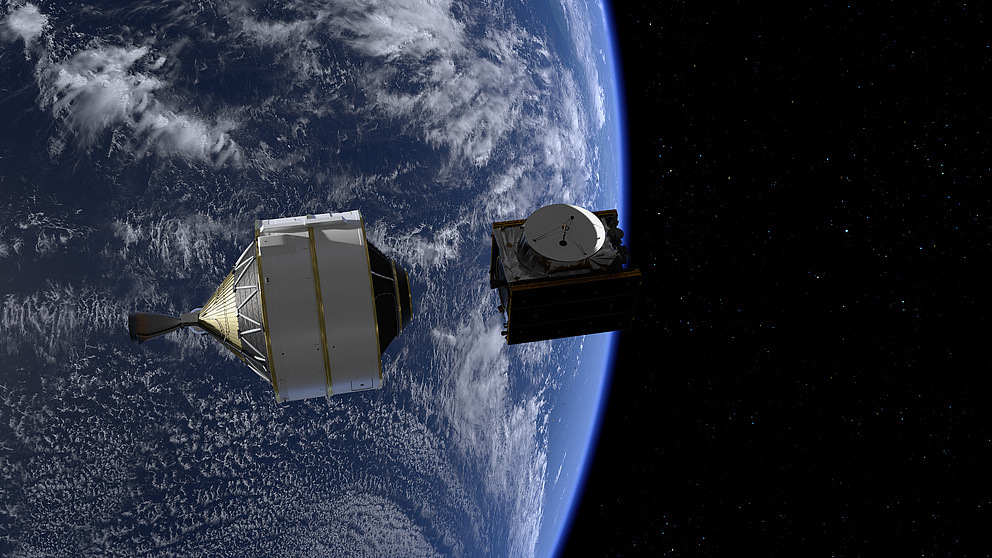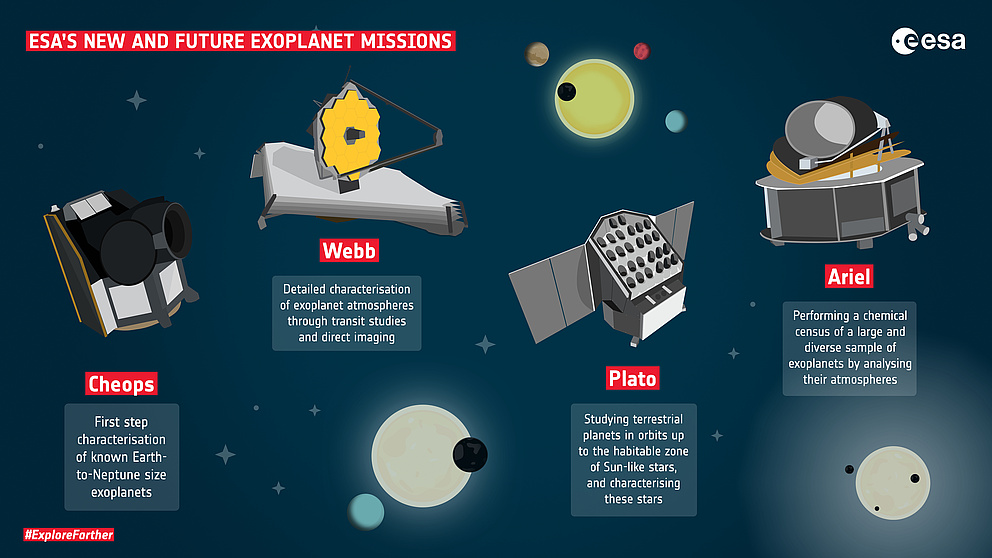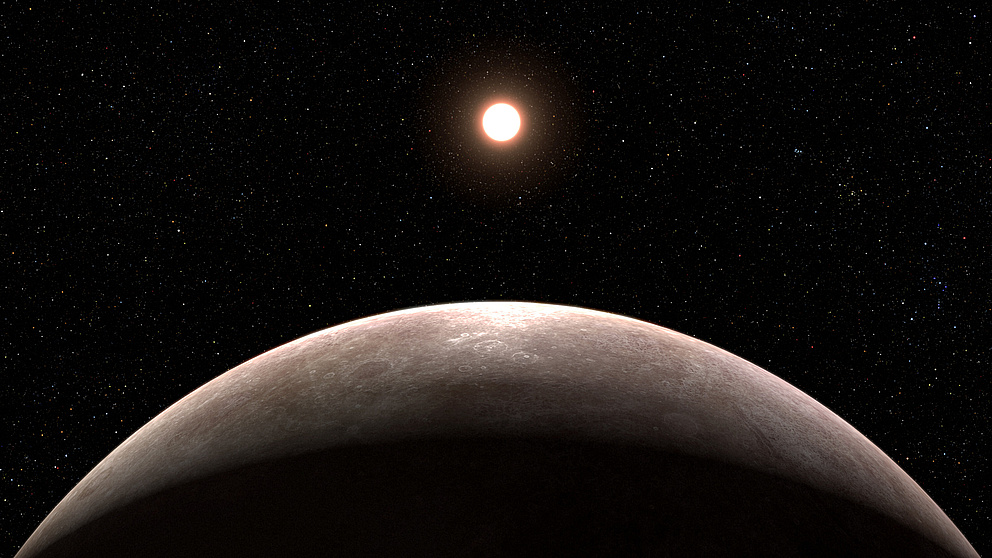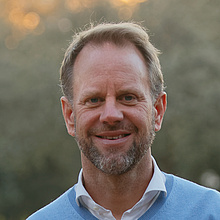

Contact
Press, Communications and Marketing
Tel.: +49 228 833-144
Fax: +49 228 833-441
presse[at]avh.de
2023 is another exciting year for space science. On 13 April, the European Space Agency has scheduled the launch of the Jupiter Icy Moons Explorer (JUICE) mission, which will focus on studying Jupiter and its three large ocean-bearing moons (Ganymede, Callisto and Europa) as planetary objects and possible habitats. Markus Kissler-Patig, former Feodor Lynen Research Fellow and now Head of Science and Operations at the European Space Agency (ESA)/European Space Astronomy Centre (ESAC) in Spain, is at the centre of things. He coordinates the divisions responsible for science operations before and during the space missions through to those dealing with data science and archives. Much of the ESA-based research is driven by the search for life beyond Earth – a life that might look very different from what we know. We asked Markus Kissler-Patig how the field of astrobiology can help to explore new forms of life and what we can expect from space exploration in the future.
Humboldt Foundation: Next to your work as the Head of Science and Operations at ESA, your research focuses on different areas of astrobiology. What is the field all about?
Markus Kissler-Patig: Astrobiology is a fascinating field trying to understand the origin of life. It looks at the co-evolution of life with the planet, whether it could have developed elsewhere in the solar system, and whether we can detect it beyond the solar system. It is a wonderful cross-disciplinary field as it combines biology, geology, atmospheric science, planetology, and astronomy. It opens our eyes to the big connections in the universe: time scales, universal laws of physics and chemistry, formation of structure, stars and planets. It tells us how we humans fit into the big picture. Eventually, it tries to answer one of the most fundamental questions: are we alone?
If there is life on other planets, what does it look like?
The main factor limiting our understanding of life is that we know of only one instance. All life on Earth has a single origin. Whether humans, plants, insects or bacteria: We have the same DNA structure, our proteins are built from the same amino acids. This makes a definition of life very challenging. It also leaves the question unanswered whether all life in the universe looks like the one we know, or whether other reproduction mechanisms and metabolisms are possible. It’s not that we’re unable to imagine how alternatives might function, but we lack proof that our ideas actually exist. So, we are still searching for that second (or third) occurrence of life – either in our solar system, for example on Mars, or on the moons of Jupiter or Saturn, or even beyond the solar system on one of the over 5,000 planetary systems discovered to date.
How do we search for life on other planets or even beyond our own solar system? Can you give examples?
The strategies we use to search for life in our solar system versus beyond are quite different. In our solar system, we can fly to the places which most likely host life (Mars, comets, the moons of our giant planets Jupiter and Saturn). There we use similar techniques of exploration as we do on Earth: detecting water, searching for traces of metabolism, geological or chemical fossils. We now even have the technology enabling us to bring samples to Earth. Beyond the solar system (and beyond our physical reach), we can only do remote measurements. For many of the 5,000 planetary systems known beyond our own, we can study the chemical composition of the planets’ atmospheres. Much like life has transformed the atmosphere of Earth, we hope to be able to detect transformations in the atmospheres of other planets not explainable by geological processes alone but requiring massive biological metabolisms to take place on the planet.
What new discoveries do you expect in the years to come? What are you particularly excited about?
I am very excited about the next two decades. With some luck, we will indeed find extraterrestrial life. Several new missions will explore the solar system. ESA’s JUICE mission is launching this year in April to go and examine the Galilean moons around Jupiter. At the same time, many nations are pushing to further explore Mars, most prominently with the NASA/ESA collaboration aiming at returning samples from Mars in the early 2030s. And with humans returning to the Moon in this decade, I am confident that we will see humans on Mars in my lifetime.

And for the future of life beyond our solar system?
Regarding the planets beyond our solar system, ESA in particular is preparing a suite of space missions specialised in characterising exoplanets. The CHEOPS mission is unveiling the nature of mini-Neptunes. PLATO (to be launched in 2027) will reveal many more Earth-like planets, and ARIEL (to be launched in 2029) will study the composition of the atmospheres and the weather on these planets. NASA is planning a ‘Habitable World Observatory’ for the 2040s, to which ESA will undoubtably contribute. I see humankind, step by step, moving towards answering the question: are we alone? Together with the explosion of the space industry worldwide, we are surely entering a golden age of space exploration.

And what role does international exchange play in these important steps ahead?
International exchange and collaboration are fundamental to space exploration. Voyaging to other planets is challenging, it requires huge financial and technical efforts, often only made possible by major nations joining forces. And when a spacecraft is launched into outer space, we are maximising its scientific value: almost always, we transport on board instruments and experiments from many international groups. Similarly, when major space observatories are built (such as the Hubble or the Webb space telescopes), the entire international community is invited to contribute ideas on how to best use them to explore the universe. At the European Space Agency, we are particularly lucky to be able to continue collaborating with all other space agencies, even during politically challenging times. Science proves once again to be a marvellous bridge builder for peace between nations.
The Feodor Lynen Fellowship enabled my first post-doctoral position at the University of California in Santa Cruz (in 1997/98). California had just inaugurated the world’s largest ground-based telescope with which I worked. I would not have imagined that it would be such a door opener to my international career. I am looking back at 25 years of a successful career that started with a little push from the Humboldt Foundation.

Markus Kissler-Patig obtained his PhD in astrophysics in 1997 from the University of Bonn, Germany, and held post-doctoral positions at the University of California Observatories in Santa Cruz, USA, and at the European Southern Observatory (ESO) in Garching, Germany. In 2008, he became the lead project scientist for the European Extremely Large Telescope. In 2012, he joined the International Gemini Observatory as Director. He returned to ESO as the Deputy Director for Science in 2018, before joining the European Space Agency (ESA) in 2019 as Head of Science and Operations.
ESA picture credits: https://www.esa.int/ESA_Multimedia/Terms_and_Conditions
